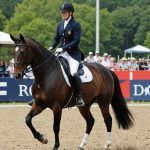Understanding Boundary Training
Boundary training is an essential aspect of puppy behavior development, crucial for cultivating respect in dogs. It involves setting and reinforcing clear limits on how a puppy interacts with its environment and others. Boundaries help puppies understand what is expected of them, fostering a sense of security and control.
Psychologically, training plays a pivotal role in shaping a puppy’s behavior. Puppies thrive when they have a clear framework of rules and expectations. This structure minimizes anxiety by providing a predictable environment, allowing the puppy to navigate the world with confidence. It also aids in developing impulse control, a key trait that supports obedience and prevents unwanted behaviors.
Also read : Irresistible Training Treats to Inspire Even the Most Stubborn Pugs!
Instilling respect through boundary training offers significant long-term benefits. This involves teaching puppies to respect personal space, furniture, and even other pets in the home. Puppies who learn to respect these boundaries are generally more obedient and easier to train for other behaviors, such as toileting and walking on a leash appropriately. Over time, successful boundary training leads to a harmonious relationship between the dog and their owner, reducing stressful situations and creating a cooperative household dynamic.
Effective Strategies for Boundary Training
Understanding and implementing effective training strategies for boundary training can significantly enhance your puppy’s behavior and obedience. These strategies promote a respectful dynamic between you and your furry friend.
Also to read : The Definitive Blueprint for Crafting an Ideal Saltwater Clownfish Aquarium
Positive Reinforcement Techniques
Positive reinforcement plays a crucial role in teaching boundaries. By rewarding desired behaviors, such as staying within set limits, you encourage compliance. Treats, praise, or extra playtime can serve as effective rewards, making learning enjoyable for your puppy. Consistency in reinforcement is key; it helps your puppy associate good behavior with positive outcomes.
Setting Clear Boundaries
Defining both physical and behavioral boundaries is fundamental. Clear communication, both verbally and through cues, ensures your puppy understands expectations. Using visual aids like markers or barriers can serve as a helpful guide for spatial limits, fostering a sense of security and clarity in your pet.
Gradual Introduction to Boundaries
Introducing boundaries should be a gradual process to avoid overwhelming the puppy. Begin by establishing simple rules and progressively advance as your puppy becomes more comfortable. Consistently monitoring your puppy’s reactions allows you to adjust the techniques to match their learning pace, thereby supporting their development effectively.
Common Challenges in Boundary Training
Boundary training may present various challenges that can test patience and perseverance. Many puppy misbehavior issues relate to energy levels and curiosity, which drive dogs to explore beyond limits. Understanding these can help tailor effective strategies.
Identifying Frequent Misbehavior
Common problems include ignoring commands, testing barriers, or persistent seeking of attention. Puppies might engage in these behaviors due to anxiety or an unclear understanding of boundaries. Recognizing these actions swiftly assists in addressing them proactively.
Strategies for Overcoming Obstacles
To overcome such hurdles, employ distraction techniques or redirection. For instance, when a puppy crosses a boundary, redirect its focus to an acceptable activity like a toy or guided play. Consistently applying these methods helps reinforce the desired behavior over time.
Maintaining Patience and Consistency
Setbacks are part of the training journey. Maintaining calm and composed responses is crucial when faced with misbehavior. Consistency in enforcing rules and offering positive reinforcement for progress encourages perseverance. Remember, patience coupled with consistent training creates an environment conducive to learning, ultimately fostering respect and obedience. This approach ensures that boundary training becomes a positive experience for both you and your puppy, building a strong foundation for future learning.
Expert Insights and Best Practices
Understanding the nuanced advice from professional dog trainers can immensely enrich your boundary training approach. These experts emphasize the importance of establishing trust and respect early in your puppy’s life, which significantly enhances obedience and long-term behaviour. Successful boundary training is often misunderstood; one common misconception is that it should be strict and punitive. However, professionals argue that it should be patient and positive, focusing on reinforcing desired behaviours rather than punishing undesirable ones.
Industry insights suggest that creating a structured environment, where rules are consistent and clearly conveyed, is essential. Boundaries should be communicated through repeated, gentle cues and consistently reinforced with positive outcomes like treats or praises. Trainers warn against being overly harsh, as it can lead to fear and anxiety rather than respect in dogs.
Adopting best practices, such as integrating short training sessions into your daily routine, makes the learning process smooth for both you and your puppy. Timing is crucial; puppies respond best to learning sessions when they are calm and attentive. Encouraging respectful behaviour is less about control and more about becoming a trusted leader and companion to your pet, fostering mutual understanding and cooperation.
Visual Aids and Case Studies
Implementing visual aids and learning from real-life case studies can significantly enhance your boundary training approach and improve puppy behavior effectively.
Infographic of Boundary Training Steps
Visual aids such as infographics offer a structured overview of key steps in boundary training. They can highlight essential aspects like using treats and clear commands, aiding in puppy obedience and helping owners set precise limits. By visually breaking down the training steps, owners can grasp complex concepts more easily, allowing for better transfer of knowledge to practical scenarios.
Real-Life Case Studies
Analysing successful case studies provides valuable training examples and insights into effective methods for encouraging respect in dogs. For instance, trainers often share stories where consistent use of positive reinforcement resulted in lasting respectful behavior in puppies. These stories can guide new pet owners through potential challenges by showcasing real-life applications of training strategies.
Video Resources for Effective Training
Video resources can further amplify the learning process. Seeing training strategies in action makes it easier for owners to mirror techniques accurately. Demonstrations often include both successes and setbacks, providing comprehensive learning experiences. This method bridges the gap between theoretical knowledge and practical implementation, facilitating smoother adaptation and execution of boundary training techniques.
FAQs on Boundary Training
Navigating the realm of boundary training often leads to numerous questions for new puppy owners. Below are some of the frequently asked questions, accompanied by expert answers to help enhance your understanding and execution of effective training strategies.
1. What are the initial steps in boundary training?
Precision in setting up both physical and behavioral boundaries is crucial. Start by identifying areas where the puppy is allowed and areas off-limits, using visual markers as cues. Gradually introduce these rules while rewarding obedience with treats and praise to encourage respect.
2. My puppy ignores boundaries. How can I improve obedience?
To boost compliance, ensure consistency in enforcing boundaries. Use positive reinforcement each time your puppy adheres to a boundary. This repetition links good behavior with positive outcomes, promoting adherence.
3. How can I tell if my puppy is overwhelmed?
Signs like persistent stress or anxiety indicate overwhelm. Monitor your puppy’s responses and adapt your training strategies. Gradual introductions and adjustment of techniques based on their comfort level ensure a respectful and effective learning process.
For further learning, explore books and online courses that delve into boundary training with expert insights. This ensures you’re equipped with comprehensive knowledge to train your puppy effectively.










